Silvia Sellán
A SIGGRAPH first-timer's log - day 0
This will be my first year attending the world's main Computer Graphics conference, SIGGRAPH, and as you may have guessed, I am super-hyped for this opportunity. I've got my boarding pass, my SIGGRAPH app and a whole new notebook to fill in with the details of the cool technical talks that I attend, so I'm ready!
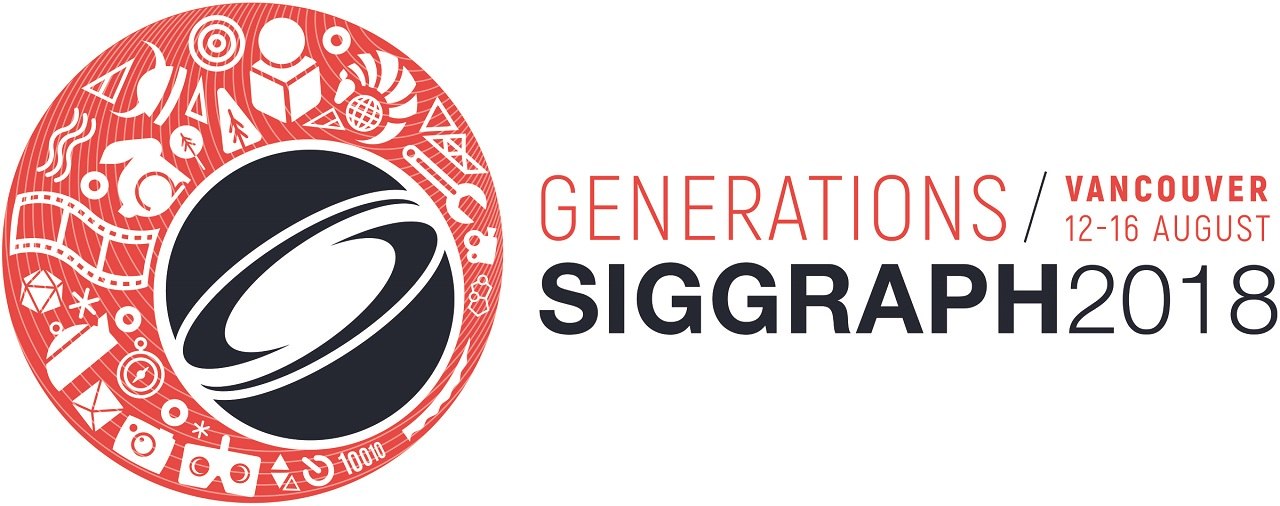
I have never been to a conference as massive as this, so my first struggle comes when looking at the schedule (or, should I say, schedules). Even if one filters by Research-related events, there is still so much going on at once that I am afraid of missing out on a lot of cool stuff. While I plan to spend most of my time attending Techincal Paper talks, there is also other events I'd love to attend (cough Game of Thrones cough). Also, even if one decides to go only to the Technical sessions, many of them are happening simultaneously, so there are still tough choices to make...
So far, I've abandoned all attempts to make a comprehensive personal schedule for the whole conference and have decided to make up my mind on a day-by-day basis. If everything goes well with my flight and airbnb check-in, my plan for Sunday August 12th is the following:
-
9.20 am - 10.45 am: Panel: Diversity and Inclusion Experiences. OK, fine, I might not be able to make it to this panel session since my plane is arriving at 9 am and I'll still have to go through the conference registration, but I'll try to at least catch half of it. It is part of a day-long workshop on Diversity and Inclusion in the world of computer graphics, which is something I am deeply concerned by. Diversity might not be the first word that comes to mind by looking at the list of speakers (see link above), but I'm keeping an open mind!
-
10.45 am - 12.45 am: Best of SIGHCI. I hear you, I don't technically know anything about Human-Computer Interaction, but the lab I'm currently at has us Graphics researchers share space with HCI researchers, and I would really love to know the latest in the field so that I can listen to their conversations without feeling completely ignorant...
-
1.30 pm - 5.30 pm: Art Gallery. The more pictures I see taken from the different exhibits, the more hyped up I am to go. This may not be the most productive use of my time as a researcher, but you never know where you're gonna find inspiration and... Who am I kidding it just looks SO cool! As an example, allow me to quote from the abstract of one of the exhibitions, called Never Alone: The Art and the People of the Story: "For "Never Alone", Amy Fredeen and Dima Veryovka paired world-class game makers with Alaska Native storytellers and elders to create a game that delves deeply into the traditional lore of the Iñupiat people to present an experience like no other." OMG! You can find summaries of all here.

-
1.30 pm - 5.30 pm: Posters. I love poster sessions, way more than talks. As a young student, posters are the perfect format in which you can directly ask questions to the presenter that are maybe too basic for some or you simply wouldn't dare ask in another setting. If you want to know more, check out this awesome video highlighting some of the work which will be in the posters. However, there will be poster sessions the whole week so I won't be too worried about missing this one if it came to it.
-
2 pm - 5.15 pm: Deep Learning: A Crash Course. I've attended a few talks about Deep Learning in the past and I've always felt like I am lacking some basic knowledge of this technique. While I am immediately skeptic of any event which markets itself with the sentence "There won't be any math", I hope to get some general understanding and interesting ideas.
-
6 pm - 8 pm: Technical Papers Fast-Forward. This will almost certainly be the highlight of the day. Seeing so many research previews in such little time sounds nothing short of epic. I'll make sure to have my notebook ready to write down those that I find the most interesting so that I can make sure to attend, since many of the technical talks will happen simultanously in the rest of the week.
Yes, I know that the above schedule makes the key assumptions that (1) I can discreetly use my Time-Turner to attend a few of the events happening at the same time that I've listed and, most importantly, that (2) I will be alive and breathing by 8 pm after waking up at 5 am in Toronto (2 am Vancouver) to make my flight... We'll see how it goes!
A SIGGRAPH first-timer's log - day 1
That was a looong day! My trip from Toronto to Vancouver went as planned, although as expected I only made it to the exhibition centre by lunchtime. I also got a bit of a cold from Air Canada's cabin temperature, but hopefully that won't affect my ability to enjoy the conference. Now for some first impressions:
Firstly, the city. I have to admit that I haven't been able to see much of Vancouver in the hours I've been here, and the parts that I have seen seem to be the most touristy of all (Gastown and the Waterfront, mostly). That being said, it is definitely a beautiful city, filled with history and marvelous views. Walking along the waterfront and staring at the ocean is comparable in my experience only to seeing the Niagara Falls or the Mediterranean coastline.
Secondly, the convention centre. I'm guessing that many of those attending have already been in Vancouver for siggraph and are therefore accustomed to this amazing place, but its beauty and practicality cannot be overstated. The walls are covered in glass so that the view as you walk throught the halls is the Vancouver Bay, and there are enough seats outside the main rooms for anyone to take a well deserved break from conventioning. There are also gender-neutral and accesible washrooms in every level, which makes a huge difference for many of us. My only complaint so far is that the on-site stands charge $4 CAD for a small water bottle, which to me sounds excessive.

Lastly, the convention itself. No matter how much you hear or read about the wonders of siggraph, the scale of the convention is sure to take you by surprise as a newcomer. it is hard not to be star-struck when attending lectures and reading the names of the most important visual effects and graphics companies, or the most prestigious universities, in people's badges. Equally, there's this feeling of witnessing the vanguard of technological research and innovation I get whenever I listen to someone speak which is hard to describe, but very fulfilling.
In the end, I only managed to attend two events on my first day:
Immersive Pavillion (Virtual, Augmented and Mixed Reality). I spent here about three hours trying pretty much every one of the works featured there. It is hence impossible for me to summarise everything I saw, so I'll just pick a few highlights. The Niantic Multiplayer AR stand looked very promising, and makes probably the only time yet I've seen a VR/AR game where I thought "That sounds fun, I'd play that". The VR story 1000 Cut Journey, where you are put in the shoes of an African-American boy as he grows up in the US could be better designed from a technical standpoint, but it's definitely something everyone should try once in a lifetime. On the other hand, there was BroadcastAR's stand where a camera used machine learning to read your age, gender and mood. I think this is a clear case of developers disregarding the ethical implications of their work, mostly aimed at selected advertising. We have recently learned that allowing gender-based advertising makes it so Science Career Ads are Disproportionately Seen by Men, and recent research has shown the negative and dangerous impact Automatic Gender Recognition (AGR) can have in transgender and gender non-conforming individuals. In case you were wondering, according to BroadcastAR's cutting-edge technology, I'm a 9-year old female.

Technical Papers Fast-Forward. This was my first experience in "Ballroom AB", the biggest room in the convention. Even though I was very tired by this point, it was indeed amazing to see so many authors presenting their work in so little time. I've always heard the rule of "don't try to be funny in your fast-forward, it will look lame"; however, I am thrilled that many of the presenters skipped that rule and made some truly hilarious fast-forwards. Many of them also recorded their own voice over the video to ensure that it fit to the 30-second maximum. I've heard plenty of criticism directed at this practice, mostly coming from English-speaking people in American and Canadian research institutions. As someone who has had trouble speaking English to large crowds in the past (let alone in siggraph and with a strict time limit), I sympathise entirely with those who picked this option.
After most likely sleeping for 12 to 14 hours, this is my tentative plan for tomorrow Monday:
-
9 am - 10.30 am: Opening Ceremony and Awards Presentation. I am honestly not sure how interesting this is going to be, but it sounds like a must-watch for a first-time siggrapher. There's also the interesting experience of seeing the award recipients, whom I recommend you look up before-hand so you know some about their contribution to the field. You can click on any of their names to know more about them: Daniel Cohen-Or, G. Scott Owen, Gordon Wetzstein, Jun-Yan Zhu, Bill Reeves.
-
10.45 am - 12.35 pm: Technical Papers (02) An Immersion in Computational Geometry. This will take place simultanously with Technical Paper Sessions (01) and (03), so you may want to look at which papers you are more interested in learning about. The decision's easy for me because my lab-mate Gavin Barill is presenting his paper, where he shows a new method for calculating winding numbers which I've found very useful already.
-
2.00 pm - 3.30 pm: Technical Papers (05) Smart Integration for Real Time Rendering. This will be happening in parallel with Technical Paper sessions (04) and (06). Honestly, I am not crazy about any of this, and they are all happening at the same time as the Keynote Session given by the head of ILM, Rob Bredow, so I may end up not attending any of the technical paper talks.
-
3.45 pm - 5.15 pm: ACM SIGGRAPH Award Talks. A great opportunity be inspired by this year's award winners and learn more about their work and what motivates them. See the morning event to learn more about each individual speaker.
-
4.30 pm - 5.30 pm: TG-CG: Transgender Networking and Open Discussion. I'm actually not sure how good this event will be (the fact that the official title uses the non-existent word transgendered makes me skeptic) but I'll at least try and swing by to give some visibilization.
-
8 pm - 10 pm: Reception. Did I hear free food? Sounds like a very interesting opportunity for networking and overall meeting new people and reconnecting with some. Also, the place it's set appears to have amazing views of the lake ocean (I've been in Toronto for too long...).
-
9 pm - 12 am: Canada Party! Yeah I have no idea how this works... But I heard free drinks, so I'm down for it!
A SIGGRAPH first-timer's log - day 2
Many say Monday is really the first day of siggraph. At least from the point of view of someone interested in Research, this is certainly true. Today is when the Technical Paper sessions started, which to me means getting the first taste of the part of siggraph I've been hearing so much about for over a year. It also meant meeting many of the top researchers in the field and being able to listen to their discussions, something priceless for a new researcher like me. To someone like me who has had to collaborate in research from the other side of the Atlantic, this was truly a day of pairing faces with names of professors and grad students. It was more than once that I was speaking to someone I thought I didn't know until I caught a glimpse of their name badge and realised I've spent hours and hours reading this person's work.
I managed to mostly stick to my pre-planned schedule, with only two minor changes. I listened to my friends' advice and decided to skip the opnening session, and instead attend the Effects Blender talk which took place at the same time in Ballroom C. This was my first encounter with the VFX industry as a researcher and I have to say, I was not disappointed. I especially enjoyed the talk about the making of the film "The Greatest Showman", which I have added to my films-to-watch list. The third talk, about tha making of the Mega Kaiju in "Pacific Rim: Uprising" was also motivating as the speaker went into the different steps of their creative process in detail. While the first talk was definitely interesting from a techincal standpoint, the fact that the speaker felt the need to repeatedly use transphobic slurs honestly ruined it for me.
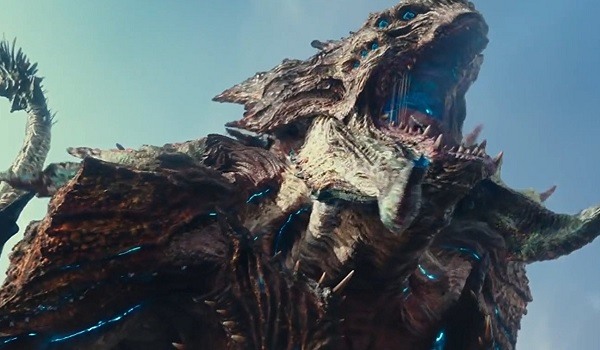
Final Mega-Kaiju from the film "Pacific Rim: Uprising".
I then attended my first Technical Papers session, which opened up with my lab-mate Gavin Barill presenting his paper on computing Fast Winding Numbers. Overall this was a great session, strongly related to my own research and from which I not only got highly motivated to continue working, but also managed to listen to new ideas which I can directly apply to my own work. The papers by Roee Lazar and others on Topological Surface Reconstruction and Yajie Yan and others on computing Medial Axes were particularly inspiring.
 Rob Bredow during his keynote speech. Photo taken by Ian Failes.
Rob Bredow during his keynote speech. Photo taken by Ian Failes.
The second change of plans came right after this session. On my advisor's recommendation I headed out to Ballroom AB to attend Rob Bredow's keynote. I'll admit that I never loved the Star Wars universe as much as I do others, like Tolkien's Middle Earth. However, even for me it was a surreal experience being able to listen to the head of ILM talk about the production of Solo. In one particular instance he told us about their struggles to simulate "an explosion like it has never been seen before". To do so, they filmed an underwater explosion using a 25000 (yes, twenty-five thousand) frames per second camera... Honestly, I didn't even know such cameras existed.
If everything goes well, here's my plan for tomorrow:
A SIGGRAPH first-timer's log - day 3
This was without a doubt the best day of my siggraph experience so far. After two days of walking around following people and sticking to a strict schedule in order not to miss anything, I feel like I finally have a more global understanding of both the venue and the events happening at a given moment. I'm only a little sad that I missed the Game of Thrones Production Session, but it was probably for the best.
My siggraph day kicked off with an amazing Technical Papers Session about meshing. I have already mentioned how useful Yixin Hu and others' paper is, but it was even more impressive to see it being presented by her. It was also very surpirisng (I'm not sure if this is a common occurence given my short siggraph experiente) to listen to many of the comments by other researchers in the Q&A, who called the method "revolutionary", "life-changing", etc. It might be safe to call this the best geometry paper at siggraph this year, at least judging from the experts' reactions. Another impressive paper from that session was Chern's and others' work on the isometric immersion problem, which yields surprisingly good results. While I have to admit I got lost in some of the mathematicla detail, this is definitely a paper I'd like to read calmly in the following months. If you're interested you can also check out their supplementary video, which I strongly recommend. The authors are also from TU Berlin, a university I would very much love to work in in the future.

Deflating a football. Screenshot from Chern et al.'s supplementary video.
While I did attend most of the following Technical Papers Session, I left right after the talk on Wave Optics and headed to the siggraph 2018 Job Fair, which just opened today. This was my first time attending any job fair, and I had set my expectations low; I'm not usually the kind of person to be wooed by any industry's advances nor by financial interests marking the path of scientific research. While my concerns in that regard still stand, I have to say that the experience of walking around the fair and listening to each company's representatives was a very eye-opening one. I mostly asked about future internship oportunities, something I will probably take into account when I start graduate school, and managed to silence my inner geek and look professional when talking to the people from Weta Digital. In the past few years I have binge-watched the Lord of the Rings' making of documentaries repeatedly, and to have a serious conversation about having an internship there with an actual Weta employee was one of the most surreal experiences of my life so far. I may or may not have screamed when they gave me a free Weta t-shirt... This was also my first time speaking to someone with a New Zealander accent and I have to say, I loved it.
And that was just my morning! My afternoon was packed with amazing talks, from Oded Stein's two back to back paper presentations (I have already mentioned how interesting a read they make) to the more fabrication-oriented "Shape Representation by Zippables" paper by Christian Schüller supervised by one of my favourite researchers, Olga Sorkine-Hornung.
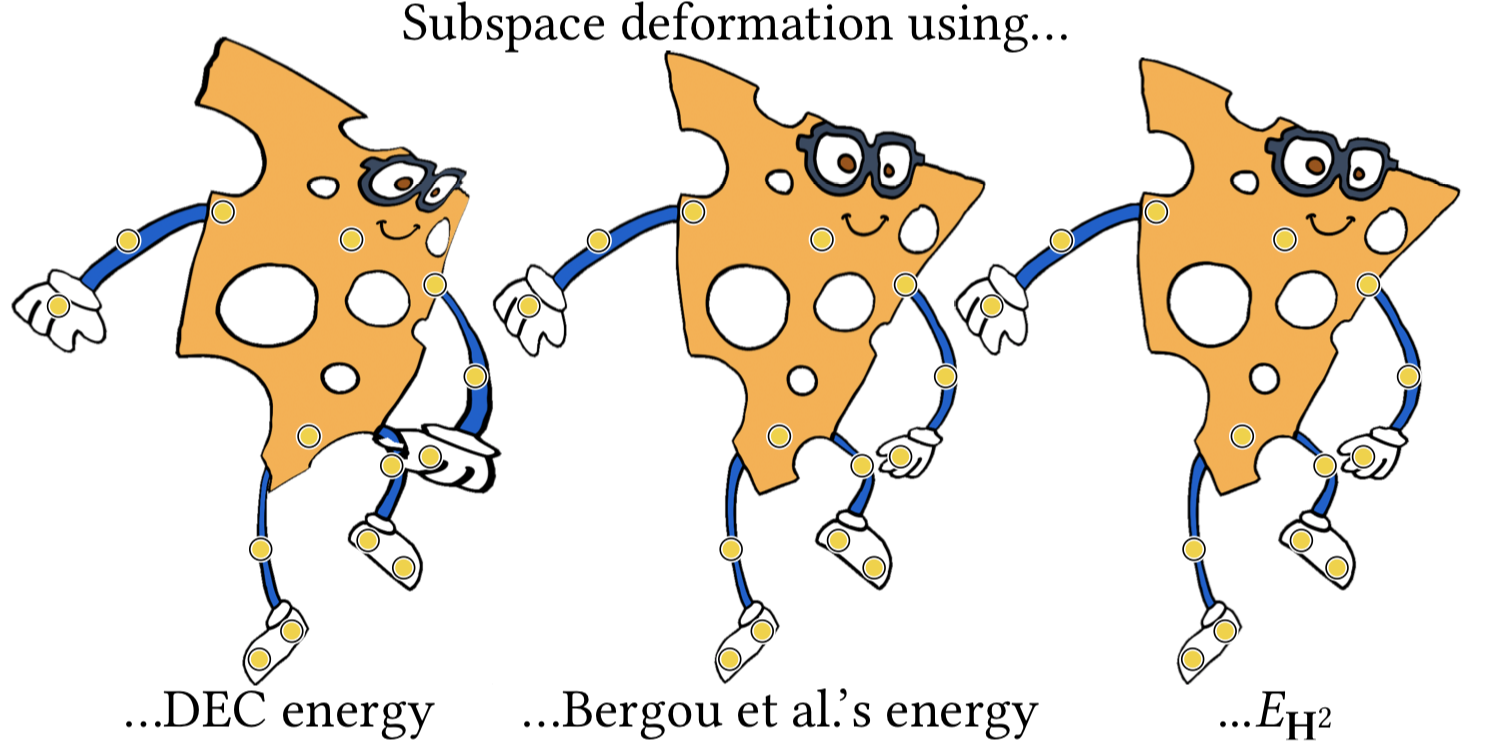
Figure from Oded Stein et al.'s paper on natural boundary conditions.
After some well-deserved rest, I went back to the convention centre for Real Time Live!, a session chaired by the great Jesse Barker where you can see the best teams in graphics compete and show off their latest work in real time. Attending this was the grand finale for a great day, and I'm very glad I did. From Pinscreen's photorealistic avatars to DreamFlux's mixed reality system, all the way through this year's winner Cory Strassburger and his low-cost motion capture set up; the combination of all the presenters made for a truly jaw-dropping experience. The fact that it was live-streamed and I could comment it in real time (pun intended) with my friends back home made it even better.
The following is my (admittedly packed) plan for Wednesday:
A SIGGRAPH first-timer's log - day 4
Today was yet another amazing day of siggraphing. While yesterday was particularly interesting because it featured many talks and sessions related to my research, today was inspiring in a different way. I feel like today I was shown a sample of the field of computer graphics as a whole, something extremely useful to someone like me who will soon be deciding on my own future research path. While my enjoyment of the individual talks may have been capped by my lack of specialised knowledge of each area, attending today's sessions had the additional benefit of not only learning about the contributions of each spaker, but also about the current challenges and open problems in different sub-fields.
It was a morning of back-to-back technical paper talks, mostly related to vector fields, meshing and surface flattening. I can't really say anything about the significance of each paper's contribution, but I can attest to the quality of most of the talks, some of which even included real-time demos. I've only ever worked with triangle meshes so far so I haven't really looked at the problem of quadrangulation, although I do know of researchers in my lab who have experience in it. Both this and the challenges of computing smooth fields especially captivated me, and I'm seriously considering doing a deep dive into the literature so I can understand this area better. At least by the looks of it, it sounds like just the type of problems I would be interested in.

Amazing teaser from Heng Liu et al's paper on Octahedral Fields.
Next came the Berthouzoz Women in Research Lunch, which took place in a truly beautiful room of the Pan Pacific Hotel. Both the food and the venue were incredibly good, only to be surpassed by the quality of the speakers. In a session masterfully moderated by professor Adriana Shulz, speakers Alla Sheffer, Marie-Paule Cani and Hayley Iben shared stories and advice about their lives in research (not necessarily gender-related), some of them absolutely jaw-dropping. I would spend hours writing about the particular interventions of each speaker, but I am not sure if all they said is public knowledge and I prefer to err on the side of caution.
I stayed at the lunch a little longer than I expected, which meant that I completely missed the talk on deformation chaired by my advisor (I'm sure he won't mind, right?) and made it just in time for the Perception & Haptics one. And thank God I did, because this was probably the most fun I've had at a Techincal Paper session in my life. Abe Davis's demonstration of his method's proeficiency by making kid show's characters dance to the beat of "Another Brick in the Wall" by Pink Floyd was something I never expected to see in siggraph, and yet it was incredibly funny. I would link to his website, where he will eventually release his "dance autotune" to the Internet (and forever change the way memes are made, I assume) but he seems to be having some trouble with Copyright. If you are reading this months after the fact, I recommend that you look this up.
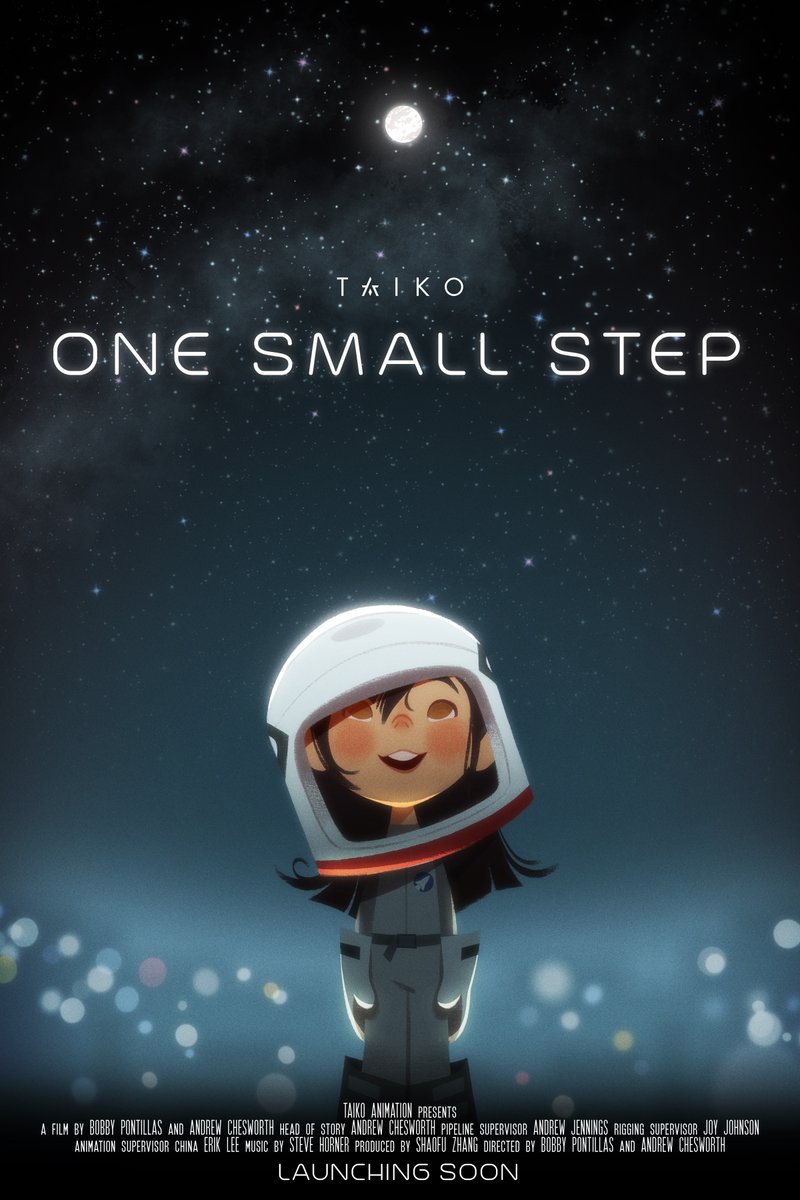
Poster for the short film "One Small Step" by Taiko.
My day could not have a better ending that the Electronic Theater. For someone who doesn't even go to the cinema too often, seeing all of these amazing short films in Ballroom AB's huge screen was a surreal experience. While some of the short films where not really my type, others did hit the spot with me. I'd like to especially mention "One Small Step", by Taiko, and "Weeds" by Kevin Hudson Productions, both of which made me cry like a baby. I'm not sure if they're available for purchase or where, but I highly recommend that you look these up.
I can't believe I'm leaving Vancouver tomorrow already. This is my plan for tomorrow:
A SIGGRAPH first-timer's log - day 5
Today has been the last and the shortest of all my siggraph days. While my schedule for today (see yesterday's log entry) might not have been as impressive as that of the past few days, it is nice to have had a more relaxed last day, especially given that I'm going to be taking an overnight flight back to Toronto and arrive there at 6 am with roughly three hours of sleep.
I spent most of my morning attending Technical Papers sessions in very different areas: design and animation. Liberated from the burden of understanding every detail of a talk that I usually impose on myself when dealing with talks from an area of research close to my own, I managed to enjoy most of the sessions. It is in talks like these where I am particularly glad to have ended up in computer graphics. I'll ellaborate. Some of the anxiety that I get (and I'm sure many others do as well) about starting a career in an area of science is that I will specialize myself too much and then grow up to not like my area as much as I initially thought. What if I am stuck in some remote field I no longer enjoy but I feel compelled not to change careers because of all the time I've already dedicated to it? After seeing so many researchers being part of very different projects from areas of graphics completely apart from each other, I don't fear this as much anymore.
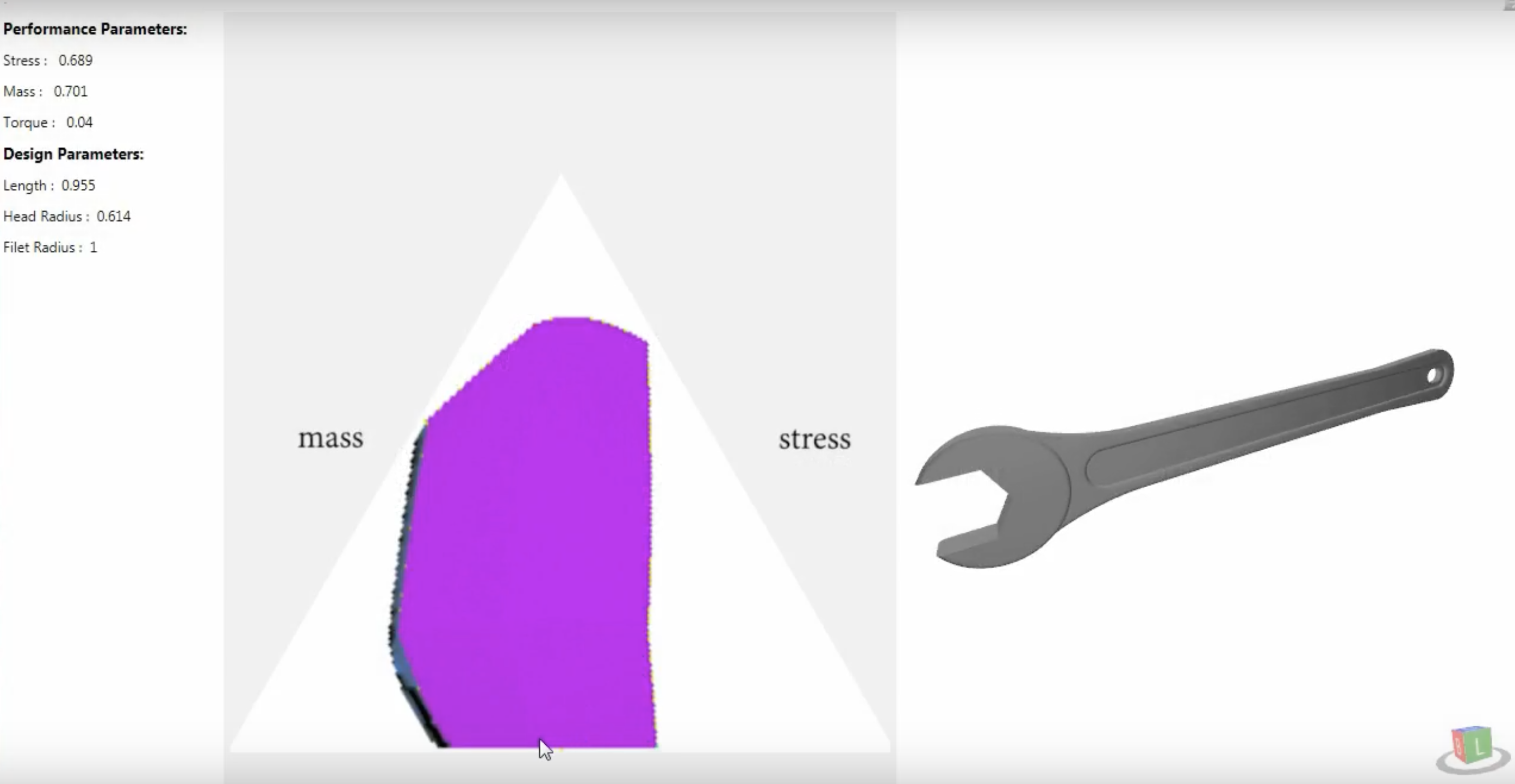
Screencap from Schulz et al.'s supplemental video
There were some papers I particularly enjoyed. Adriana Schulz and others used the concept of Pareto dominance in the context of manufacturing to find the different optimum designs of some model. I am familiar with the concept of Pareto fronts from game theory and it was very interesting to see it applied in this case. If we are designing a wrench which has "stress", "mass" and "heat resistance" parameters and we have two models with the same "stress" and "mass" but different "heat resistances", why even consider the one with the worst heat resistance? This reduces the space of possible designs without any inconvinience to the user, and makes for a nice interactive tool. The particular way in which she approximates the Pareto front is also clever on its own, although I am unclear as to whether that's part of their contribution.
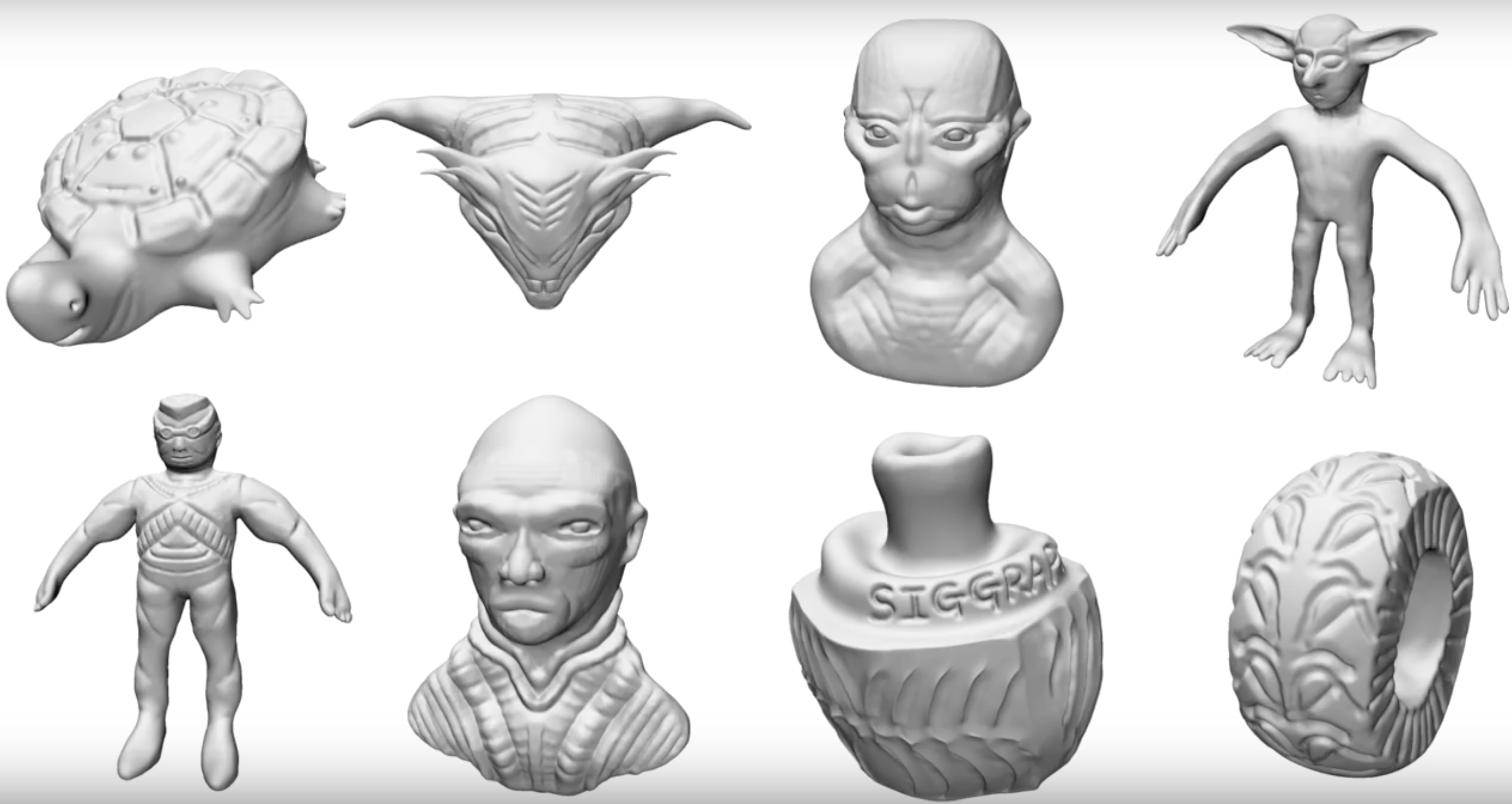
Figure from Mengqi Peng et al.'s paper
Mengqi Pen and others presented their paper on 3D sculpting. The talk was an impressive one and the method presented, which "learns" from your previous strokes to better understand your next moves, seems very promising. It has also given me the idea of combining my CSG project with sculpting applications (they seem very straight-forward). I had never given this any thought before and it sounds like a promising idea.
While I cannot comment to the quality of their contribution, some of the animations presented in session 32 where beautiful to watch. From a deep reinforcement framework to imitate very different human motions by Xue Bin Peng and others to neural networks for modelling quadruped motion by He Zhang and others. The last included a real-time demo of a wolf's motion being animated and all I wanted to do was scream "Link!".
After lunch, I attended what became my last siggraph session: the "Solo: A Star Wars Story" Production Session. I've heard that production sessions get old after a while and while this was only my first time going to one, I can see why this is the case. As amazing as it is to hear stories from the making of a block-buster, there's the danger of falling into the standard "show the rendering process step by step" type of animation. They are jaw-dropping the first two or three times, but they become somewhat routine after some time. I did enjoy the parts where they actually refered to specific, distinct parts of their creative process, or even gave some details about the plot that you wouldn't get just by watching the film. Overall this was a great use of my time; however, I decided not to stay for the next Production Session that I had in my schedule and left directly for the airport.
A few final personal thoughts on siggraph as a whole:
-
For those of us who come from the depths of physics or pure mathematics, siggraph is nothing like the scientific conferences we are accustomed to. Not everyone you will encounter in the convention centre will be a researcher, let alone have knowledge of your personal area of study. I was somewhat concerned about the generality of the conference before attending, but this proved to be meaningless during my stay there. While some of, say, Weta's personnel may not know the intricacies of geometry processing, the same way that we would never be able to produce the high-quality animations that they constantly create, I say we look at this as a proof of the richness of graphic's applications and nothing more. I am glad that the work of researchers like those around me can serve as the foundation for true works of art like the ones I've seen this week.
-
There's a lot of money in computer graphics. This is something I had already noticed going from a mathematical research institution to a computer science one, but the experience of attending siggraph made it all the more obvious. This isn't necessarily a bad thing, but one cannot avoid thinking of the many areas of science that are struggling to find funding while staring at the opulence of many of the graphics events. Is it right that companies only seeking to make profit choose the direction in which scientific research is pursued? Probably not. I don't think those of us working in universities have to feel bad or guilty about this fact, but I think it will help with our decisions as a community that we acknowledge this and keep it in mind.
-
In 5 days, I attended around 25 different sessions with around 5 speakers each. That makes about 600 speakers. Only three of them were women (discounting the siggraph Women's Lunch for obvious reasons). The fact that we appear to ignore this problem will not make it go away, and absurd statistics such as this are counterproductive towards motivating and engaging people from different genders and backgrounds in our field. This is especially worrying coming from a conference which has struggled with sexual harrassment and assault allegations in the past.






 Rob Bredow during his keynote speech. Photo taken by Ian Failes.
Rob Bredow during his keynote speech. Photo taken by Ian Failes.




